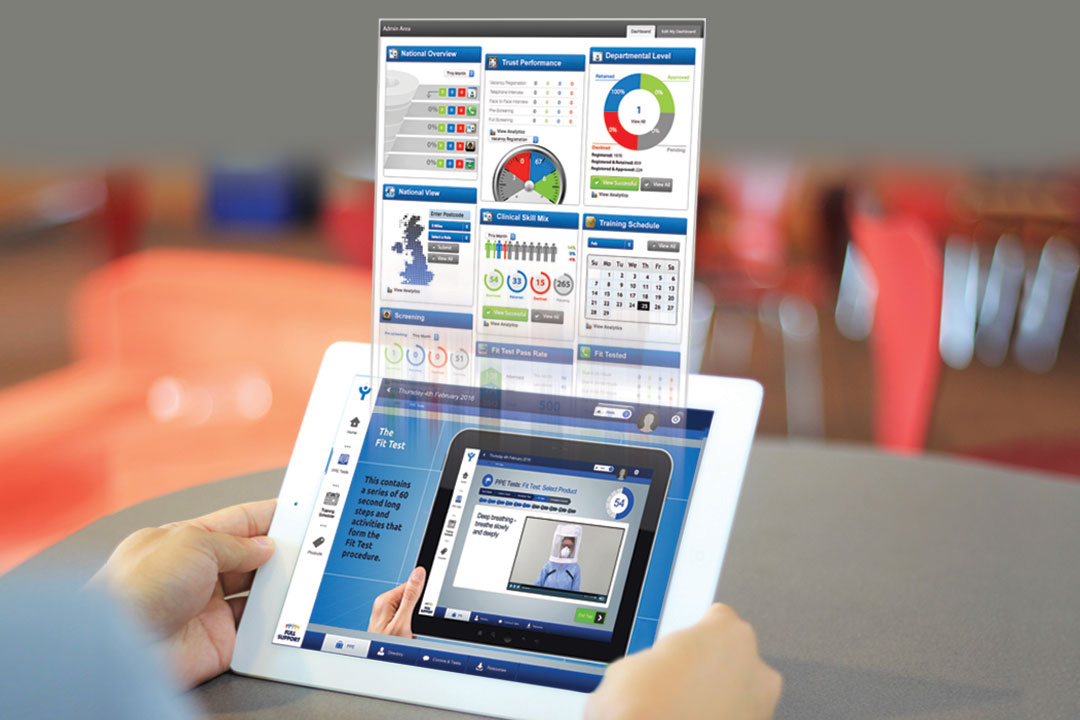The Importance of Record Keeping

If you’re staff use Respiratory Protective Equipment (RPE) at work, you should be aware that it is a legal requirement that they pass a Fit Test on the required make/model of respirator before using it in the workplace.
But did you know: recording your staff’s RPE usage, maintenance and Fit Test records is a legal requirement…
Before
Before RPE is issued to employees, a full assessment of risks and exposures should be undertaken to identify any potential hazards and the appropriate steps required to adequately control potential risks and protect your employees.
If employees are subject to any respiratory hazards, a hierarchy of controls may need to be referenced to assess whether or not RPE would be a suitable control method for the hazard.
If RPE is required, you must:
- Select RPE that is adequate for the hazard and suitable for the task required
- Inform, Fit Test and train those who would be required to use RPE
Detailed records of your Fit Test results should be kept for a minimum of 5 years (OC282/28 .85) and may be required for as many as 40, in the case of health surveillance.
Fit Test Reports should include (OC282/28 .10 & .84):
- The name of the person being Fit Tested
- The make, model, material and size of the respirator
- Whether the respirator is the subject’s, their organisation’s or a test piece
- The test exercises performed during the test
- The Fit Test employed (Qualitative, Quantitative, Negative Pressure etc.)
- The measured fit factor for each exercise and overall score (if applicable)
- The pass level used in the test (if applicable)
- Whether the test was a pass or fail
- The date of the test
- Details of the tester, including name, organisation, address
Further details may also be useful to include in your reports including:
- Condition of the respirator
- If any assistance was required donning, doffing and fit checking the respirator
- Number of tests attempted
- (In the case of reusable RPE) A serial number, or other means of identifying this particular piece
Sample Fit Test Reports can be downloaded and printed from www.FIT4RPE.org/resources
During
Once adequate RPE has been selected, every member of staff requiring protection has been provided with a suitable respirator that they have passed a Fit Test on and the appropriate reports have been recorded and stored, work can commence.
However, to ensure RPE is kept in good condition, ongoing recording and monitoring must take place.
Maintenance and Cleaning
- Maintenance is required for all types of RPE with the exception of single-use/disposable respirators. Regular maintenance and cleaning is essential for the good upkeep of your RPE and to minimise risk of faults.
An example of a Monthly Maintenance Report can be found on page 27 of the HSG53.
Repeat Fit Testing
- It is good practice to repeat Fit Testing on a regular basis. If RPE is used on a regular basis as a primary means of exposure control, we recommend regular re Fit Testing be carried out, every 1-3 years.
Repeat Fit Testing is required sooner if the wearer:
- loses or gains a significant amount of weight that their face changes shape,
- undergoes any dental or facial work,
- develops any scars, moles or other face changes around the face-seal area,
- has a health and safety policy that requires it.
Accidents and incidents
The HSE state that companies must report and keep records of:
- Any reportable death, injury, occupational disease or dangerous occurrence
- All work-related injuries that result in a worker being unable to do their full range of normal duties for more than seven consecutive days
Note: As of 2012, a worker sustaining an occupational injury for three-six days must be recorded, but does not need reporting.
The recently revised HSE Accident Book is an essential tool for recording incidents in a compliant manner. For more information, please visit the HSE website.
Confused?
RPE recording, reporting and monitoring can be a confusing process which, if done incorrectly, can put your employees’ health at risk and lead to considerable fines.
To ensure you’re covered, get in touch and see how our RPE Experts can help.

